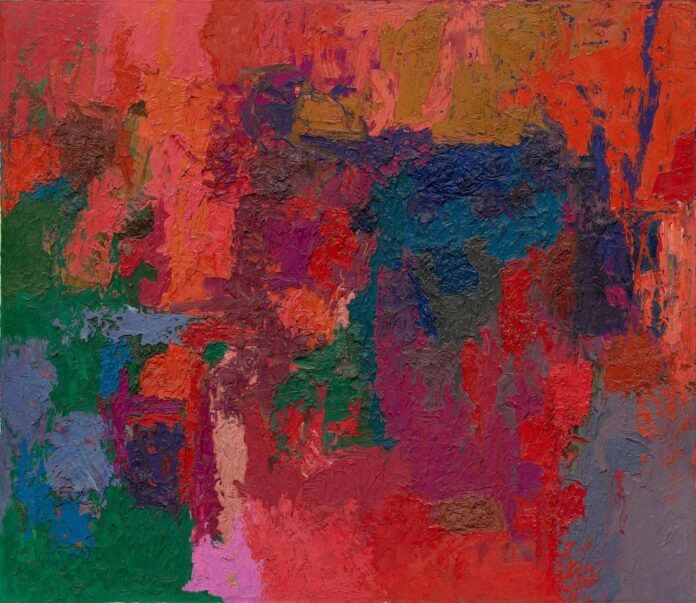George Morrison (1919-2000), a member of the Grand Portage Band of Chippewa, was a key member of the Abstract Expressionist cohort in New York City in 1940s, 50s and 60s, but his contributions have long been omitted from the movement’s history. Now, the National Gallery of Art in Washington, DC has helped ensure his representation with the acquisition of his vibrant painting, Untitled (1961), the first piece by a Native American artist added to its important collection of New York School works.
The composition’s vivid and thickly impastoed areas of red, purple, pink, ochre, blue and green, which Morrison rendered by squeezing paint from tubes directly onto the canvas, are in dialogue with contemporaneous works by Willem de Kooning, Philip Guston and other AbEx artists, but also reflect an Indigenous relationship to the landscape. The composition’s tripartite organisation, an NGA press release notes, evokes the elements of sky, land and water in Anishinaabe cosmology.
Morrison’s abstracted approach to the landscape in Untitled would recur across much of his work in subsequent decades. In 1970 he moved back to Minnesota, where he spent the rest of his life teaching at the University of Minnesota and, after retiring in 1983, working at his home and studio on the Grand Portage Indian Reservation.
Last year, the United States Postal Service honoured Morrison’s contributions to American art by issuing a series of stamps featuring reproductions of five of his works. Among them is Phenomena Against the Crimson: Lake Superior Landscape (1985), a work in the collection of the Minnesota Museum of American Art that features a similar evocation of the Great Lakes landscape rendered in a saturated palette as Morrison had honed decades earlier in Untitled.
A spokesperson for the NGA says there are no immediate plans to put the work on public display. The painting’s acquisition, which was finalised last year but announced on Friday (27 January), was made possible by a gift from collector David Rubenstein, the billionaire co-founder of private equity giant The Carlyle Group.
In 2020, the NGA acquired its first painting by a Native American artist, an enormous painting by Jaune-Quick-to-See-Smith, an enrolled Salish member of the Confederated Salish and Kootenai Nation in Montana. The acquisition was seen as both a major milestone and, for some, an egregiously belated “first” for an institution that had been open for 79 years.


















![The Art Angle Podcast: How the Art World in Ukraine’s Besieged Capital Is Fighting Back [Re-Air]](https://usaartnews.com/wp-content/uploads/Ta1m44YtqzDSURZyjtzlmOy5TwDKl8u5AsCBXOmB-80x60.jpg)






